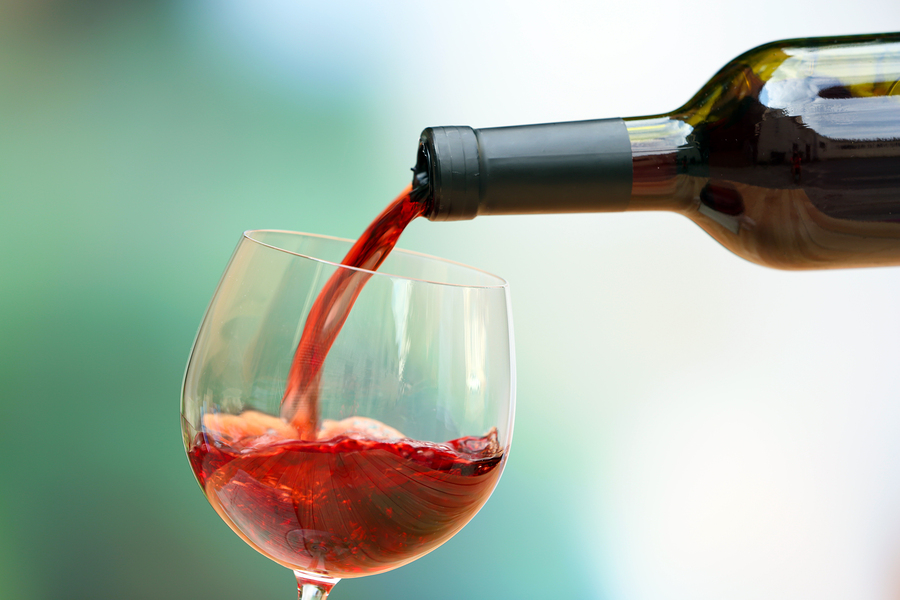7 unexpected wine facts to make you thirsty to learn more
Like anything in life, having a basic understanding and knowledge of something can help steer you in the right direction, and ultimately, determine your enjoyment.

Take the Wine & Spirit Education Trust (WSET) for instance, who are celebrating their 50th anniversary. Like a fine wine – 1969 was a great vintage for red Burgundy and a disappointing one for Bordeaux – they’ve developed and matured into the largest global provider of wine and spirits qualifications.
To mark this milestone, the first WSET Wine Education Week is taking place with almost 70 events across the UK, with sessions ranging from Deciphering Wine Labels to Matches Made In Heaven and All That Sparkles for some added fizz.
Thirsty to learn more, we asked Lucy Stevenson, marketing manager and wine educator from WSET, to share some insider knowledge about the wine world…
1. Over 1,000 different grape varieties are used for making wine
“You’ve heard of chardonnay and cabernet sauvignon, but how about the headily-perfumed torrontés, which can be found planted thousands of metres above sea level in the mountains of Argentina? Or Portugal’s Touriga Nacional, a key grape in some of the country’s finest reds and vintage ports?” asks Stevenson.
2. Winemaking has developed over thousands of years
“The oldest known trace of a fermented grape beverage dates back to 7th millennium BC, though many believe that winemaking long pre-dates this. Winemaking techniques evolve over time, resulting in a diverse range of wine styles, tastes and flavours to explore.”
3. The wine map is ever-expanding
“Not long ago, no one knew that England could produce world-class sparkling wines. Today, Romania is developing a global reputation for its pinot noir, while China has become an important producer of cabernet sauvignon-based red wines. Watch this space!” says Stevenson.
4. One person’s Christmas treat is another’s summertime thirst quencher
“The UK loves port, but we drink it almost exclusively around the festive season in the depths of winter. In Portugal’s beautiful Douro Valley, a chilled glass of tawny port is a traditional lunchtime refresher for thirsty grape growers and pickers in the summer sun. There’s no need to confine your favourite wine to just one time of year.”
5. Not enjoying a wine? Food might be the culprit
“A strong ’umami’ taste in your food can make your wine taste bitter and astringent – as can sweet food. On the other hand, salty food can make your wine taste softer and fruitier. Learning the basics of food and wine pairing can transform your dining experience,” she says.
6. Some wines can improve in bottle for decades
“While most wines should be drunk while young and fresh, some high-quality wines can develop new layers of flavour over time. Older reds become more earthy and savoury, while older whites develop delicious nutty or honeyed flavours. If you want to try ‘ageing’ a bottle of wine, it’s important to store it on its side – somewhere dark with a cool, consistent temperature.”
7. You don’t have to be born with a superhuman palate to be a great wine taster
“Do you find it hard to notice the differences between wines?” asks Stevenson. “Everyone starts off in the same boat. Learning to pick out aromas and flavours in wine is like any other brain training exercise – it just needs practice. And there are less enjoyable things to practise than wine tasting!”
The Press Association
Latest posts by The Press Association (see all)
- How edible flowers can make your dishes look and taste divine - April 30, 2024
- Beauty entrepreneur Liz Earle on turning 60: Ageing is a gift - April 30, 2024
- Unseen photo of William and Kate’s wedding released to mark 13 years of marriage - April 29, 2024
- The Tattooist Of Auschwitz author Heather Morris on why now is the perfect time for a TV adaptation - April 29, 2024
- Fried halloumi and chickpea rainbow salad - April 29, 2024





















